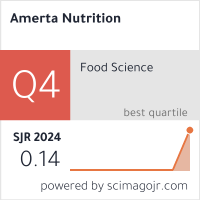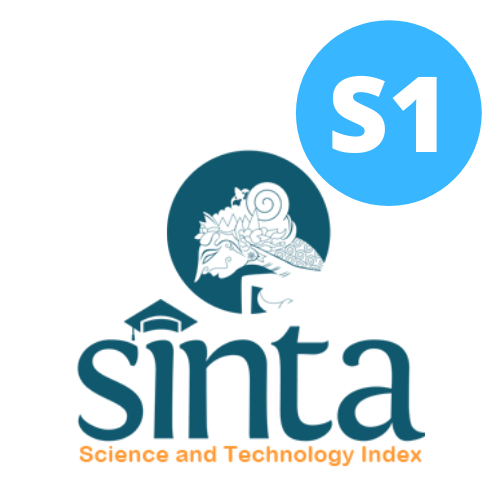Understanding Nutrition Labelling and Consumer Behavior in India: A Scoping Review
Memahami Pelabelan Gizi dan Perilaku Konsumen di India: Sebuah Tinjauan Ruang Lingkup

Background: Growing burden of non-communicable diseases is a major public health concern in India, with nearly one in five individuals aged 15-49 overweight or obese. In this context, front of pack food labelling is often proposed to guide consumers towards healthier food choices. Yet, there is limited research on how Indian consumers actually interpret and respond to such labels, leaving a gap in understanding its real-world influence on purchasing decisions.
Objectives: To examine nutrition label literacy and its influence on consumer behavior in India. The study aimed to assess label understanding, identify factors to effective use, and explore strategies to enhance label functionality.
Methods: Scoping review was conducted adopting the PRISMA-ScR method. Literature published from January 2004 to July 2024 was systematically searched on Scopus, PubMed, and ProQuest databases. Studies were included if they examined knowledge, awareness or implementation of nutrition labelling among Indian consumers.
Discussions: 12 of 1256 cited articles were included. Findings showed that barriers to effective label use included inadequate use of detailed information, inclination towards user-friendly format such as warning labels, and pervasive misinformation related to packaged foods. Educational interventions, especially among youth, had the potential to enhance label literacy. While FSSAI has made regulatory progress, the voluntary and inconsistent Front-of-Pack (FoP) labelling remains insufficient.
Conclusions: Nutrition labelling in India has not reached its full effect. Mandatory warning labelling, standardized packaging, school-based education, and active regulatory action are proposed. Stepwise, multi-sectoral action is the key to labelling of food products becoming a stronger public health intervention.
Principato, L., Pice, G. & Pezzi, A. Understanding food choices in sustainable healthy diets – A systematic literature review on behavioral drivers and barriers. Environmental Science & Policy 163, 103975 (2025). DOI: 10.1016/j.envsci.2024.103975.
Sharma, M., Gaidhane, A. & Choudhari, S. G. A Comprehensive Review on Trends and Patterns of Non-communicable Disease Risk Factors in India. Cureus https://DOI.org/10.7759/cureus.57027 (2024) DOI:10.7759/cureus.57027.
Malnutrition. World Health Organization https://www.who.int/news-room/fact-sheets/detail/malnutrition#:~:text=Diet-related%20noncommunicable%20diseases%20%28NCDs%29%20include%20cardiovascular%20diseases%20%28such,for%20these%20diseases%20globally.%20Scope%20of%20the%20problem (2024).
Regional Strategy on Nutrition 2010–2019. 14 https://applications.emro.who.int/docs/EM_RC57_4_en.pdf (2010).
Wang, X. The Impact of Food Nutrition Labels on Consumer Behavior: A Cross-national Survey and Quantitative Analysis. IJPHMR 1, 18–27 (2024). DOI: 10.62051/ijphmr.v1n2.03.
Noncommunicable diseases. World Health Organization https://www.who.int/news-room/fact-sheets/detail/noncommunicable-diseases (2024).
Luhar, S. et al. Forecasting the prevalence of overweight and obesity in India to 2040. PLoS ONE 15, e0229438 (2020). DOI: 10.1371/journal.pone.0229438.
Johnson, C. et al. Labelling completeness and sodium content of packaged foods in India. Public Health Nutr. 20, 2839–2846 (2017). DOI: 10.1017/S1368980017001987.
Shrestha, A., Cullerton, K., White, K. M., Mays, J. & Sendall, M. Impact of front-of-pack nutrition labelling in consumer understanding and use across socio-economic status: A systematic review. Appetite 187, 106587 (2023). DOI: 10.1016/j.appet.2023.106587.
Sreekumar, S. FSSAI’s new labeling and display regulations- A bird’s eye view. https://www.scconline.com/blog/post/2021/06/11/fssai/ (2021).
FSSAI approves proposal to display nutritional information labelling of total sugar, salt and saturated fat in bold letters and bigger font size in 44th meeting of Food Authority. Food safety and standards authority of India.
Campos, S., Doxey, J. & Hammond, D. Nutrition labels on pre-packaged foods: a systematic review. Public Health Nutr. 14, 1496–1506 (2011). DOI: 10.1017/S1368980010003290.
Food Labelling. Food and Agricultural Organisation of the United Nations https://www.fao.org/food-labelling/en//.
Ghosh-Jerath, S. et al. Mapping ultra-processed foods (UPFs) in India: a formative research study. BMC Public Health 24, 2212 (2024).
Casari, S. et al. Changing Dietary Habits: The Impact of Urbanization and Rising Socio-Economic Status in Families from Burkina Faso in Sub-Saharan Africa. Nutrients 14, 1782 (2022). DOI: 10.3390/nu14091782.
Aiyar, A., Rahman, A. & Pingali, P. India’s rural transformation and rising obesity burden. World Development 138, 105258 (2021). DOI: 10.1016/j.worlddev.2020.105258.
Vemula, S. R., Gavaravarapu, S. M., Mendu, V. V. R., Mathur, P. & Avula, L. Use of food label information by urban consumers in India – a study among supermarket shoppers. Public Health Nutr. 17, 2104–2114 (2014). DOI: 10.1017/S1368980013002231.
Soerderg Miller, L. Nutrition Label Literacy: The Intersection of Health Literacy and Food Label Reading Research Findings and Implications for Educators. AADE in Practice 4, 38–42 (2016). DOI: https://doi.org/10.1177/2325160316650253.
Kansal, S., Raj, A., Pedapanga, N., Worsley, A. & Rathi, N. Indian adolescents’ perceptions of packaged food and food labels – A qualitative inquiry. Appetite 180, 106342 (2023). DOI: 10.1016/j.appet.2022.106342.
Verma, M., Aggarwal, R., Nath, B. & Kakkar, R. Exploring the influence of food labels and advertisements on eating habits of children: a cross-sectional study from Punjab, India. BMC Public Health 23, 311 (2023). DOI: 10.1186/s12889-023-15058-3.
Menon, A., Patel, N., Arulprasad, R., Mouttoulatchoumy, D. & Lakshminarayanan, S. Influence of ultra-processed food in the diet of South Indian young adults: an explanatory mixed method study. Eur J Nutr 63, 2339–2355 (2024). DOI: 10.1007/s00394-024-03429-4.
Mediratta, S. & Mathur, P. Understanding of nutrition information on food labels among higher income adults in India. Health Education Journal 82, 461–472. DOI: https://doi.org/10.1177/00178969231172131
Verma, P. et al. Influence of Packed Food Labeling on Shopping Practices: A Cross-Sectional Study. Indian Journal of Community Medicine 49, 484–488 (2024). DOI: 10.4103/ijcm.ijcm_977_22.
Singla, M. Usage and understanding of food and nutritional labels among Indian consumers. British Food Journal 112, 83–92 (2010). DOI: 10.1108/00070701011011227.
Nagalatha, A. S. & Deepa, G. C. A Study on Impact of Nutrition Labeling on Buying Behavior. Ind. Jour. of Publ. Health Rese. & Develop. 10, 1498 (2019). DOI: 10.5958/0976-5506.2019.01510.9.
Nagireddi, T. et al. Study on knowledge of front-of-pack labeling and food group-based dietary intake among chronic gastritis patients. Journal of Family Medicine and Primary Care 12, 2128–2133 (2023). DOI: 10.4103/jfmpc.jfmpc_322_23.
Bhattacharya, S., Bera, O. P. & Shah, V. Consumers’ Perception About Front of Package Food Labels (FOPL) in India: A Survey of 14 States. Front. Public Health 10, 936802 (2022). DOI: 10.3389/fpubh.2022.936802.
Dunford, E. et al. Availability, healthiness, and price of packaged and unpackaged foods in India: A cross-sectional study. Nutrition and Health 28, 571–579 (2021).DOI: https://doi.org/10.1177/02601060211039124.
Sindhu, S. & Madaiah, M. Impact of educational intervention in promoting KAP of food label information to make healthier food choices among adolescents in Bangalore City. Journal of Family Medicine and Primary Care 12, 1371–1378 (2023). DOI: 10.4103/jfmpc.jfmpc_2266_22.
Zafar, M. Z., Shi, X., Yang, H., Abbas, J. & Chen, J. The Impact of Interpretive Packaged Food Labels on Consumer Purchase Intention: The Comparative Analysis of Efficacy and Inefficiency of Food Labels. IJERPH 19, 15098 (2022). DOI: 10.3390/ijerph192215098.
Gebre, T. & Gebremedhin, B. The mutual benefits of promoting rural-urban interdependence through linked ecosystem services. Global Ecology and Conservation 20, e00707 (2019). DOI: 10.1016/j.gecco.2019.e00707.
Chopera, P., Chagwena, D. & Mushonga, N. Food label reading and understanding in parts of rural and urban Zimbabwe. Afr H. Sci. 14, 576 (2014). DOI: 10.4314/ahs.v14i3.12.
Aggarwal, R., Pal, S., Chauhan, S., Manuja & Mishra, S. Food label literacy and its determinants among residents of Bathinda city: A mixed methods study. Journal of Family Medicine and Primary Care 14, 2788–2796 (2025). DOI: 10.4103/jfmpc.jfmpc_217_25.
Fardet, A., Aubrun, K., Sundaramoorthy, H. & Rock, E. Nutrition Transition and Chronic Diseases in India (1990–2019): An Ecological Study Based on Animal and Processed Food Caloric Intake and Adequacy according to Nutrient Needs. Sustainability 14, 14861 (2022). DOI: 10.3390/su142214861.
Purushotham, A., Aiyar, A. & Cramon-Taubadel, S. von. Processed foods, socio-economic status, and peri-urban obesity in India. Food Policy 117, (2023). DOI: https://doi.org/10.1016/j.foodpol.2023.102450.
Rai, R. K. et al. Prospective cohort study of overweight and obesity among rural Indian adults: sociodemographic predictors of prevalence, incidence and remission. BMJ Open 8, e021363 (2018). DOI: 10.1136/bmjopen-2017-021363.
Nguyen, P. H. et al. The double burden of malnutrition in India: Trends and inequalities (2006–2016). PLoS ONE 16, e0247856 (2021). DOI: 10.1371/journal.pone.0247856.
Souza, S. M. F. D. C., Lima, K. C. & Alves, M. D. S. C. F. Promoting public health through nutrition labeling - a study in Brazil. Arch Public Health 74, 48 (2016). DOI: 10.1186/s13690-016-0160-x.
Vargas-Meza, J., Jáuregui, A., Contreras-Manzano, A., Nieto, C. & Barquera, S. Acceptability and understanding of front-of-pack nutritional labels: an experimental study in Mexican consumers. BMC Public Health 19, 1751 (2019). DOI: 10.1186/s12889-019-8108-z.
Saleem, S. M., Bhattacharya, S. & Deshpande, N. Non-communicable diseases, type 2 diabetes, and influence of front of package nutrition labels on consumer’s behaviour: Reformulations and future scope. Diabetes & Metabolic Syndrome: Clinical Research & Reviews 16, 102422 (2022). DOI: 10.1016/j.dsx.2022.102422.
Chopra, S., Arora, C., Malhotra, A. & Khurana, S. Industrially produced trans fat: Usage, health implications, global and indian regulations. Indian J Public Health 65, 71 (2021). DOI: 10.4103/ijph.IJPH_851_20.
Malhotra, A., Chopra, S., Arora, C. & Khurana, S. Industrially produced trans fat: Usage, health implications, global and indian regulations. Indian J Public Health 65, 71 (2021). DOI: 10.4103/ijph.ijph_851_20.
Martini, D. & Menozzi, D. Food Labeling: Analysis, Understanding, and Perception. Nutrients 13, 268 (2021). DOI: 10.3390/nu13010268.
Manjrekar, D., Bahurpi, Y., Agarwal, P. & Singh, M. Food Labelling Exemptions: A Scientific and Comprehensive Analysis. National journal of community medicine (2024). DOI:https://doi.org/10.55489/njcm.150420243739.
Kassem, H. et al. Investigation and Assessment of AI’s Role in Nutrition—An Updated Narrative Review of the Evidence. Nutrients 17, 190 (2025). DOI: 10.3390/nu17010190.
Capecchi, I., Borghini, T., Bellotti, M. & Bernetti, I. Enhancing Education Outcomes Integrating Augmented Reality and Artificial Intelligence for Education in Nutrition and Food Sustainability. Sustainability 17, 2113 (2025). DOI: 10.3390/su17052113.
Bera, O. P., Singh, R. & Bhattacharya, S. Food literacy & food labeling laws—a legal analysis of India’s food policy. Journal of Family Medicine and Primary Care 12, 606–610 (2023). DOI: 10.4103/jfmpc.jfmpc_880_22.
Shangguan, S. et al. A Meta-Analysis of Food Labeling Effects on Consumer Diet Behaviors and Industry Practices. American Journal of Preventive Medicine 56, 300–314 (2019). DOI: 10.1016/j.amepre.2018.09.024.
Penzavecchia, C. et al. The influence of front-of-pack nutritional labels on eating and purchasing behaviors: a narrative review of the literature. Eat Weight Disord 27, 3037–3051 (2022). DOI: 10.1007/s40519-022-01507-2.
Besson, T., Durand, F. & Zerhouni, O. The Organic Halo Effect: Perceived Caloric Disparities in High‐ and Low‐Calorie Foods and the Role of Nutrition Label Reading Frequency. J Human Nutrition Diet 38, e70052 (2025). DOI: 10.1111/jhn.70052.
Copyright (c) 2025 Amerta Nutrition

This work is licensed under a Creative Commons Attribution-ShareAlike 4.0 International License.
AMERTA NUTR by Unair is licensed under a Creative Commons Attribution-ShareAlike 4.0 International License.
1. The journal allows the author to hold the copyright of the article without restrictions.
2. The journal allows the author(s) to retain publishing rights without restrictions
3. The legal formal aspect of journal publication accessibility refers to Creative Commons Attribution Share-Alike (CC BY-SA).
4. The Creative Commons Attribution Share-Alike (CC BY-SA) license allows re-distribution and re-use of a licensed work on the conditions that the creator is appropriately credited and that any derivative work is made available under "the same, similar or a compatible license”. Other than the conditions mentioned above, the editorial board is not responsible for copyright violation.












































